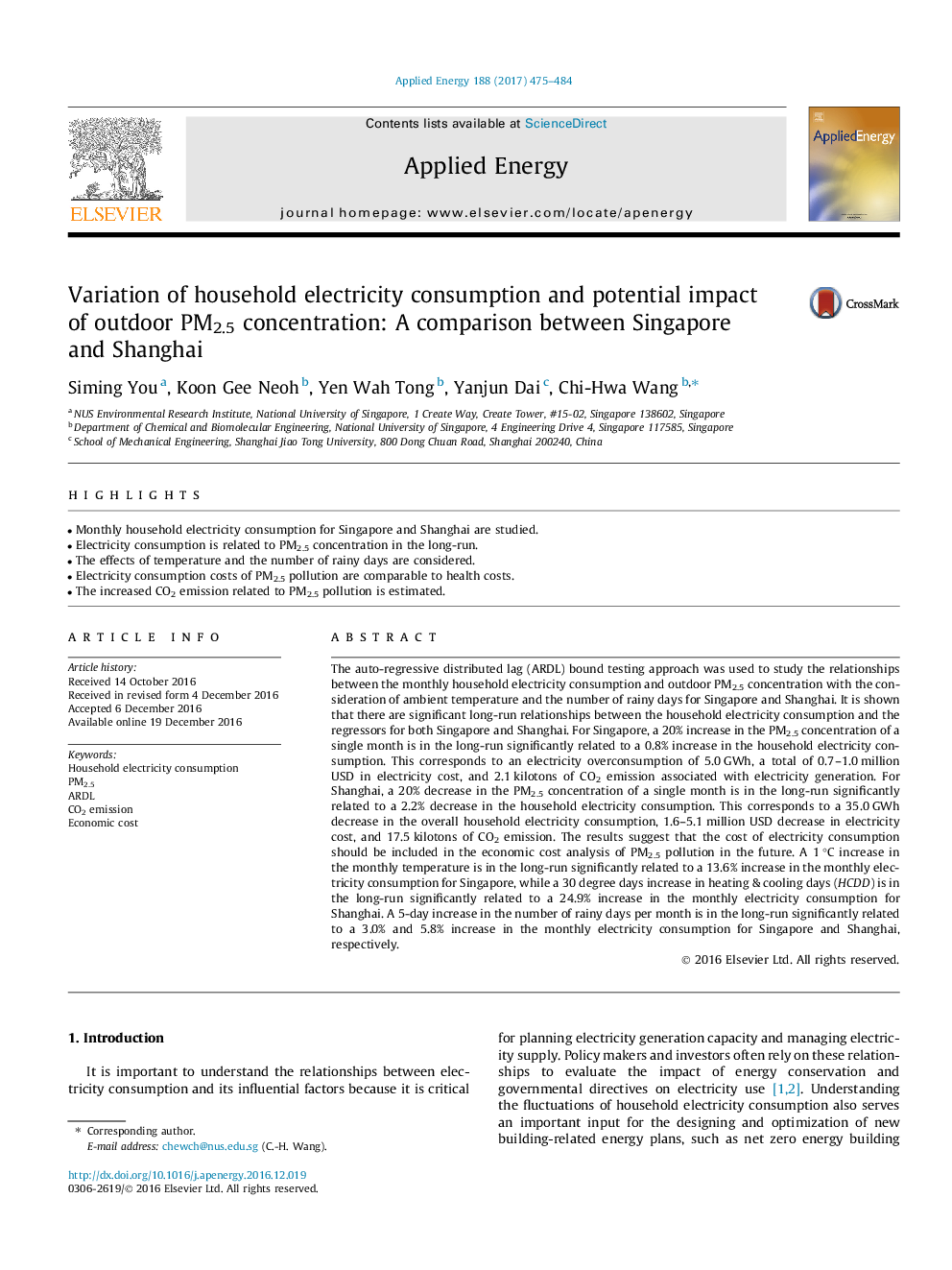| Article ID | Journal | Published Year | Pages | File Type |
|---|---|---|---|---|
| 4911150 | Applied Energy | 2017 | 10 Pages |
Abstract
The auto-regressive distributed lag (ARDL) bound testing approach was used to study the relationships between the monthly household electricity consumption and outdoor PM2.5 concentration with the consideration of ambient temperature and the number of rainy days for Singapore and Shanghai. It is shown that there are significant long-run relationships between the household electricity consumption and the regressors for both Singapore and Shanghai. For Singapore, a 20% increase in the PM2.5 concentration of a single month is in the long-run significantly related to a 0.8% increase in the household electricity consumption. This corresponds to an electricity overconsumption of 5.0 GWh, a total of 0.7-1.0 million USD in electricity cost, and 2.1 kilotons of CO2 emission associated with electricity generation. For Shanghai, a 20% decrease in the PM2.5 concentration of a single month is in the long-run significantly related to a 2.2% decrease in the household electricity consumption. This corresponds to a 35.0 GWh decrease in the overall household electricity consumption, 1.6-5.1 million USD decrease in electricity cost, and 17.5 kilotons of CO2 emission. The results suggest that the cost of electricity consumption should be included in the economic cost analysis of PM2.5 pollution in the future. A 1 °C increase in the monthly temperature is in the long-run significantly related to a 13.6% increase in the monthly electricity consumption for Singapore, while a 30 degree days increase in heating & cooling days (HCDD) is in the long-run significantly related to a 24.9% increase in the monthly electricity consumption for Shanghai. A 5-day increase in the number of rainy days per month is in the long-run significantly related to a 3.0% and 5.8% increase in the monthly electricity consumption for Singapore and Shanghai, respectively.
Related Topics
Physical Sciences and Engineering
Energy
Energy Engineering and Power Technology
Authors
Siming You, Koon Gee Neoh, Yen Wah Tong, Yanjun Dai, Chi-Hwa Wang,
